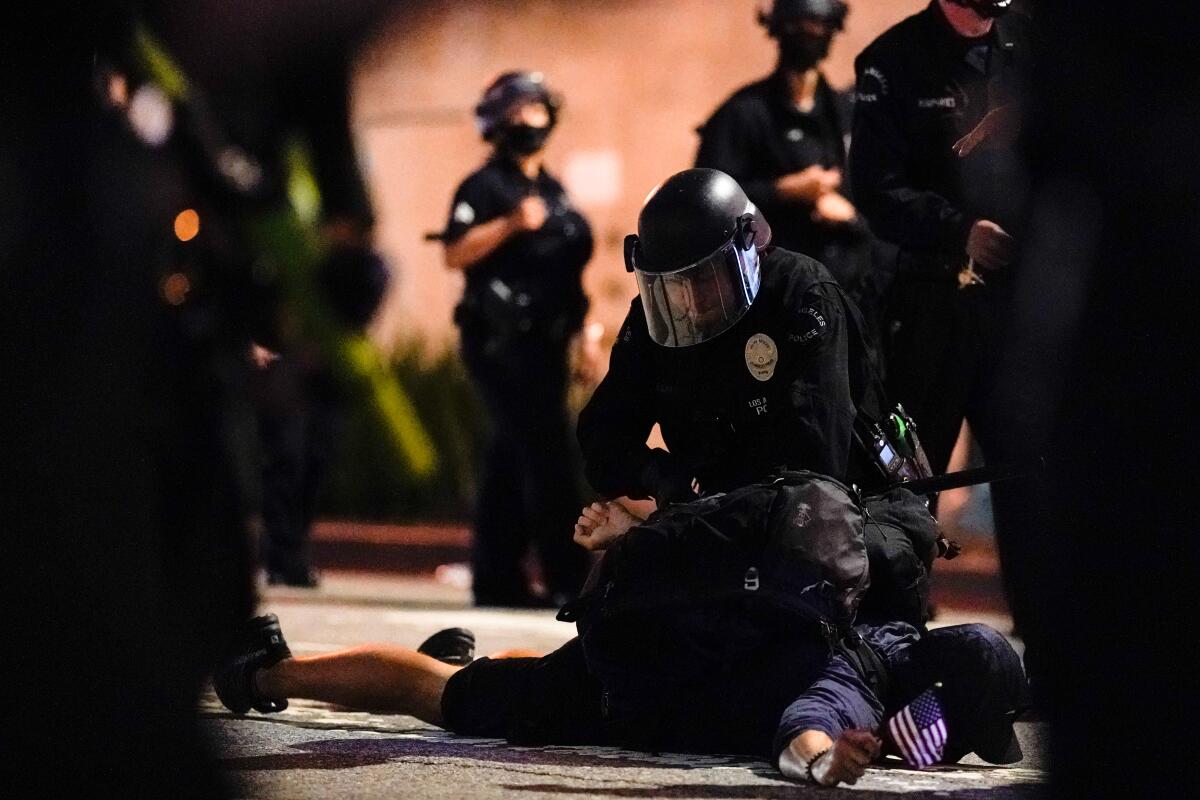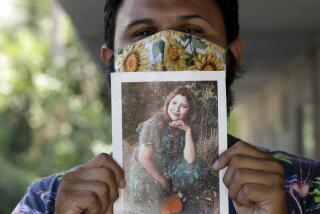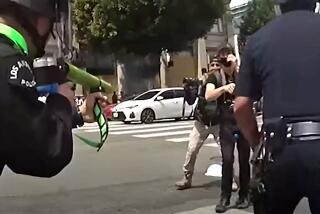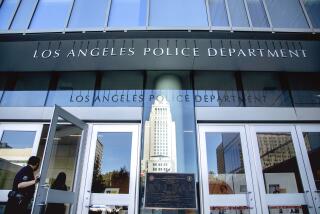Complex, years-long litigation anticipated in major LAPD protest lawsuit

A lawsuit alleging a brutal and unconstitutional crackdown by Los Angeles police during protests this summer — potentially the largest and most expensive case of its kind in city history — is expected to take years to resolve, even if a settlement is reached along the way.
The discovery process, in which both sides solicit and collect evidence, is only just beginning. Thousands of records must be collected and dozens of stakeholders must be deposed, including Mayor Eric Garcetti and LAPD Chief Michel Moore but also individual protesters who suffered injuries, attorneys for both sides said in a joint report filed in U.S. District Court last month.
Presiding U.S. District Judge Consuelo B. Marshall has set a tentative date for a trial, but not for another year and a half — on April 26, 2022.
The city could agree to settle the lawsuit instead, making that schedule moot, but such a decision would almost certainly be followed by protracted negotiations over what is owed to those with claims against the city.
“It’s complicated,” said Carol Sobel, an attorney for the plaintiffs, who include Black Lives Matter — Los Angeles, the Los Angeles Community Action Network and other individual protesters.
The activist groups and individuals allege that the LAPD violated protesters’ constitutional rights by arresting them, at times on infractions that only warranted street citations, and then subjecting them to horrible conditions — including leaving them handcuffed on buses for more than 12 hours without access to bathrooms or water. They also allege the LAPD used projectiles and batons in brutal ways, not only to disperse crowds but to wound and harm protesters who pushed back when the department unilaterally declared the gatherings illegal.
The activist groups and protesters want class status in the case, which would allow them to wrap together claims from thousands of protesters all at once and demand damages commensurate with the size of the broader collective.
In response, LAPD officials and city attorneys have maintained that police reacted in a reasonable way to dangerous street gatherings where individuals were committing crimes, including assaulting officers and lighting fires.
In the recent joint report, city attorneys said police were responding to “coordinated mass looting” and “unprecedented lawlessness and chaos.”
City attorneys have argued against class status in the case, suggesting protesters should argue their claims individually.
In the filing last month, they said the city is already facing at least two other lawsuits and 45 tort claims related to the LAPD’s handling of the protests — many of which are likely to turn into lawsuits, as well. They also said they expect more claims to be filed before the statute of limitations runs out near the end of the year.
Sobel, who has litigated major class-action lawsuits against the LAPD before, said she has been in talks with City Atty. Mike Feuer’s office this week about how to start moving forward with discovery, but expects roadblocks.
“Police are going to assert all sorts of protections” against the release of information, Sobel said, “and we’re going to be fighting for a while to figure out what happened.”
Police referred questions about the case to Feuer’s office, which declined to comment.
Among other things, Sobel said the protesters want to know how top-level decisions were made around deployments and the use of tactical weapons. She said they want text messages, emails and other communications not only between top city officials like Garcetti and Moore, but also between them and other major stakeholders like Rick Caruso, the billionaire mall magnate and owner of the upscale Grove complex, which was threatened by individuals starting fires and burglarizing stores after one of the largest protests, at nearby Pan Pacific Park, spiraled out of control on May 30.
The protesters also want “all City documents and communications regarding the protests, the use of force at the protests, dispersal orders, the arrests and other activities related to the protests,” according to the recent filing.
The LAPD, the City Council, and the National Police Foundation working on behalf of the Police Commission are all conducting reviews of the events, which Sobel said could also inform the lawsuit — and bolster it if problems with the official response are found.
It is a high-stakes process for a city already struggling to pay its bills under a coronavirus-related economic slump.
Sobel said the case is likely to produce “the largest damages class ever in a protest in the country,” and in their recent filing, she and other attorneys for the protesters projected that damages could easily reach into the tens of millions of dollars.
As just one example, they argued that “several thousand” arrestees may have a claim of $12,000 each for being subjected to unconstitutional conditions in detention. Sobel said that could be nearly 4,000 arrestees — which, at $12,000 a piece, would approach $50 million in damage claims.
In addition, protesters who were detained on infractions that normally merit just a citation on the street and protesters who were injured have their own claims. The protesters also are seeking an injunction against the LAPD using projectile weapons and batons on protesters moving forward.
The city has paid out tens of millions of dollars to settle claims in past cases where police cracked down on protest crowds, but never in a case so large. The current case deals with allegations spanning multiple days and nights, in various neighborhoods and involving thousands of people.
Money aside, it’s clear both sides also view the lawsuit as one with the potential to reshape LAPD policy for crowd control at future protests.
The protesters and activist groups in the case argued in the recent joint filing that the “key legal issues” to be considered are “the basis of the arrests and the conditions of confinement on buses,” the legality of arresting people for infractions that merit street citations only, and the use of batons and projectiles on protesters.
Also at issue, they argued, is “the general question of the lawfulness of the actions in suppressing peaceful protests through the use of curfew orders, failing to provide sufficient notices to disperse and opportunities to disperse, and suppressing First Amendment activity of protesters based on the purported actions of a small number of individuals not representative of the overall character of the protests.”
Of particular interest to the plaintiffs, Sobel said, will be the decisions that led to the department deploying 40-mm projectile launchers, which she said are not designed to disperse protesters but to “incapacitate” people.
The city’s attorneys argued in the same filing that the key issues are “whether there was probable cause to arrest” the protesters after curfew violations and “failures to disperse,” and, once they were arrested, whether the conditions they were subjected to were a violation of their due process rights.
Also key, city attorneys said, is the question of whether police were justified, “under the totality of the circumstances,” in using batons and projectiles to disperse the crowds.
More to Read
Sign up for Essential California
The most important California stories and recommendations in your inbox every morning.
You may occasionally receive promotional content from the Los Angeles Times.











